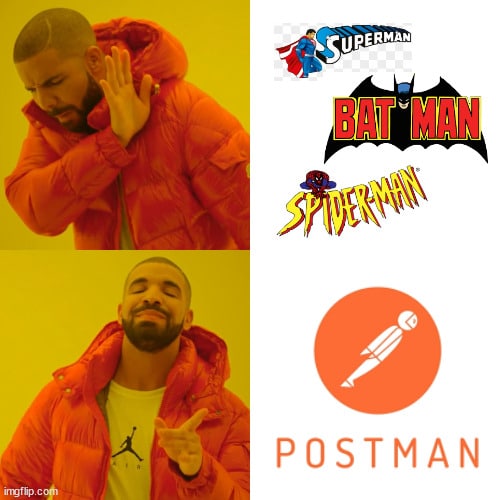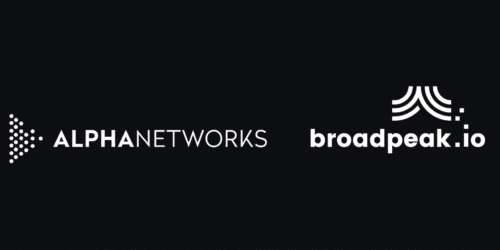We continue to work every day to facilitate the adoption of our APIs. The latest news is that our users can now easily interact with our APIs via our officially supported Postman collections.

It is an exciting new step because Postman is great for quickly validating some scenarios involving broadpeak.io APIs. Indeed, learning how to use a 3rd party API can be time-consuming. Visual API development tools such as Postman make the learning journey much more accessible!
By just “forking” some of our collections and adding them to your workspace directly, you will be able to access the following benefits:
- Visually explore and interact with broadpeak.io’s API without writing code.
- Facilitate follow-up on API modifications.
- Avoid making manual API requests or useless repeated requests for multiple team members.
- Access demo recipes to rapidly test the technology and some specific use cases.
- Easily share and modify collections with your colleagues and partners.
- Contribute and propose through pull requests to enrich broadpeak.io collections.
Postman is complementary to the API Reference hosted on our Knowledge Center. It can do similar things to let you test some of our API calls but make it easier if you prefer to do it on your desktop. It also helps to use recipes to quickly create demos (see the description of the collections below) and let them adapt to your case.
What is Postman?

Postman is an easy-to-use (and free!) dev tool for making API calls. It is an API client to create, share, test, and document APIs with various additional features. It allows users to create and save simple and complex HTTP/s requests and read their responses. You can either use it via the Web or via the Desktop application. We recommend you explore the Postman website for more information.
Today, we will explore the concept of “collection”. A Postman Collection is a way to group related request templates in a folder structure. This allows for easy organization of requests; even better, Postman will enable us to export collections to share.
broadpeak.io Postman collections
You will quickly notice on Postman broadpeak.io workspace that we make several collections available:

Indeed, we want to make available our complete suite of REST API and what we call “recipes” (for example, to show you how to create virtual channels easily in HLS or DASH) that are a chain of requests to demonstrate a scenario.
In this blog, we will take a generic approach and show you the basics of using one of our collections. In other blog posts, we will describe in detail some recipes proposed.
Getting started with broadpeak.io’s Postman Collections
Pre-requisites
Please note that you need to have created your account on both Postman and broadpeak.io before starting:
- Create a free account with Postman
- Create a free broadpeak.io account
Step 1: Add a broadpeak.io collection to your account using forking
First, you must get access to and fork our collections from the Postman website.
You can do it yourself by going on this link: https://www.postman.com/broadpeakio/workspace/broadpeak-io/overview and choosing the collection you want to fork.
Or you can click on the following orange button, “Run in Postman.” Clicking this button will trigger the user flow to fork a Postman collection. In that case, the Collection includes the entire broadpeak.io’s REST API collection. Once you click the button, a new tab will open, prompting you to select another orange button that says, “Fork collection.” Click that button.
If you chose the first option, you need to select the collection, click on the “more actions” and “create a fork” buttons:

Then you will be asked to create a name for your forked collection — this to manifest you are a duplicate and not the authentic one. You’ll also have to select which of your existing Postman workspaces you want to copy or fork this collection into.
We recommend to fork the collection in a public workspace, this will allow you to pull the collection update. However, keep in mind that if you fork this collection into a public collection, it will technically be viewable by other people.

A fork of the collection will be created in the workspace you select.
Step 2: Add your API key as environmental variables
You are almost ready to make API requests for broadpeak.io in Postman with minimal setup. One last detail you need to configure before start working is your authentication.
Indeed, when you add the collection to your Postman instance, you still need to add your API token into an environment variable “API_TOKEN”. Your API token will automatically be used as a bearer token on each API call, which will authenticate you on our API gateway.
To add your key to the catalog, click on the Environment you want to use, and set a new “API_TOKEN” variable of type “secret”. You need to add your API Key value in the API_TOKEN variable, under Current Value.

Once you’ve added your credential as variable, you will be ready to make requests to the broadpeak.io API collection!
Step 3: Select a call, add your values, send your request, and review your response
The next step would be to send calls and interact with our platform.
First, select the endpoint you want to target to build your request:

We will use the broadpeak.io API > Live Sources > Create Live Source endpoint for this example.
The next step will have you navigate to the Params tab to start filling in the parameters of your request.
After everything is set up in your request, you can click the “Send” button. If successful, you should receive the following payload:
{
"name": "ABC",
"description": "A description of the source",
"url": "https://example/media/content.m3u8",
"backupIp": "9.9.9.9",
"id": 42
}
Congratulations! You have sent your first API request to broadpeak.io using Postman!
Step 4: Create your own chain of requests
When comfortable with Postman, you can build your recipes to create your demos/integrations. It consists of chaining API calls to achieve a series of actions.
Look at the following examples for some inspiration: “how to create virtual channels easily in HLS or DASH”. These have been done to help on this demo.
Please do not hesitate to share with us your recipes! We will happily promote them in our public workspace and share them with our community.
Follow up with us
We worked on our Postman collection because we believe it will facilitate familiarization and interaction with our APIs and products.
We’d love to know whether this helps you out. You can let us know by leaving a comment after clicking on the thumb up (or down) button at the bottom of our Postman doc page.

And, of course, you can always reach out by chatting with us on this page, by direct message/reply on Twitter, or by email.











